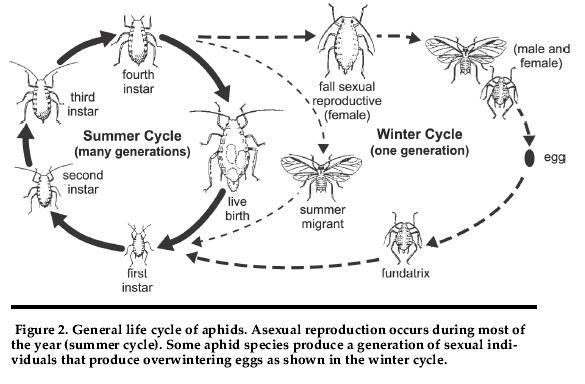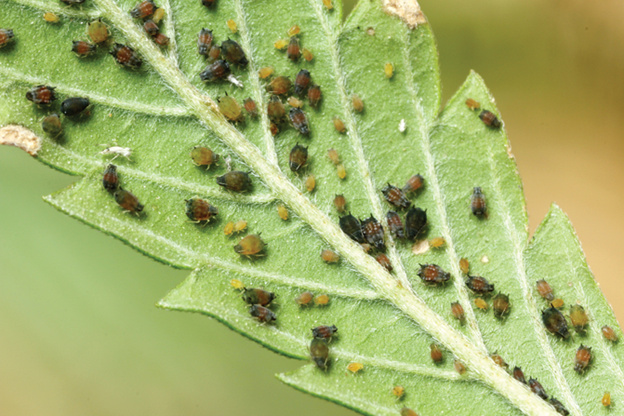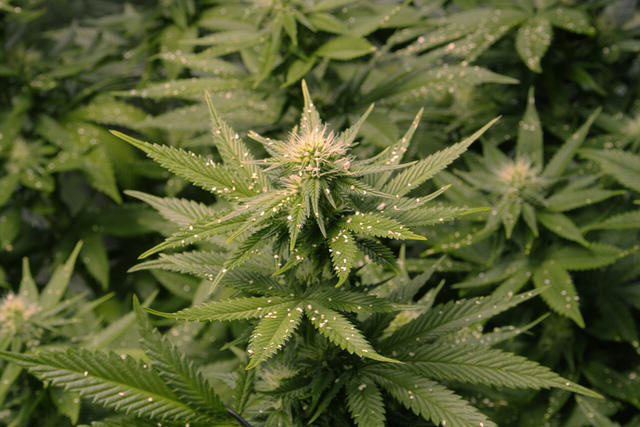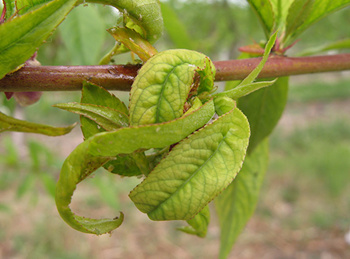For the next entry in the series, we’re going to talk about another pest that has, at one point or another, most likely impacted all of us. That’s right gang, we’re going to talk about Aphids.
Aphids are quite possibly the most fine-tuned engines of destruction that have ever been conceived by either God or Man. They are uniquely suited for damaging the gardens of anyone that runs afoul of them, but where cannabis is concerned they have several ways of being uniquely annoying even if they never reach the point of a “plague on your houses” kind of scenario. And don’t get me wrong, that can happen as well.
Biology:
Biologically speaking, aphids got dealt a pretty sweet hand for perpetuating the species. Aphids have whats known as a seasonal, adaptive, life cycle. A Viviparous, or all-female, summer cycle and an egg laying, hardier, winter cycle.

During the summer cycle, all aphids born are female and they molt rapidly through their instar stages. Once they reach the adult stage they can give live birth to new nymphs immediately and the average aphid can give live birth daily across an adult life span of approximately 30 days. When the temperature begins to drop, aphids can begin to produce males in order to fertilize eggs and deposit them in then soil for overwintering. That’s correct, they can just make the decision to change up their whole reproductive cycle. Its really quite impressive. In addition to all of that, if the population in a given area gets too high, they can also make the decision to produce a winged variety that can find a new place to spread and begin producing new aphids once it lands. What the fuck right?
Aphids pose a risk to your crop both from their direct ability to feed on the plant, but also from the effects of their feces. They secrete a sweet sticky substance known as ‘honeydew’ that will cause mold and mildew to develop in your canopy if it gets bad enough.


They typically colonize the underside of the leaves, and you can usually get a tip that they’ve moved in if you can spot their shed exoskeletons; those powder white specks in the above image. They’ll fall and collect on the foliage below, and can point you in the right direction. Other examples of infestation that will stick out at you are spotty, yellowish foliage as well as warped-twisted growth patterns:


Its import to physically remove all instances of aphid colonization that you can see; then you can apply whatever chemical treatment you would prefer, luckily there are many options that are effective and safe to use.
As far as beneficials go, there are several options; the most commonly used being various species of parasitic wasps.
Aphidius Colemani / Aphidius Ervi – These two parasitoids kill aphids (The very common green peach aphid and potato/foxglove aphid respectively) by injecting their larvae directly into their bodies. The larvae will grow, consume, and eventually emerge from the infected aphid. These can be maintained via a banker plant system that I can explain in the DMs if anyone is interested.
Chrysoperla Carnea (Green Lacewing) – Probably one of the coolest predator insects, the adults look somewhat like dragonflies but it’s the larvae that are the predators. Surprisingly intense and violent, I once witnessed a lacewing larvae kill multiple aphids and impale their corpses on the spines that protrude from its back. No bullshit.
Coccinellidae (Ladybugs) – Every gardeners best friend, a fun and cute little generalist predator whos larvae is anything but. Ladybug larvae actually look like black and orange alligators and will kill and consume way more aphids at a time than they have any right to. Hard to keep around though, they’ll quickly disperse if too many are in a given area.
Keep a weather eye out, if you allow them to spread and start crawling on your buds they’ll mold those poor bastards up faster than you can stop them. Best of luck.
